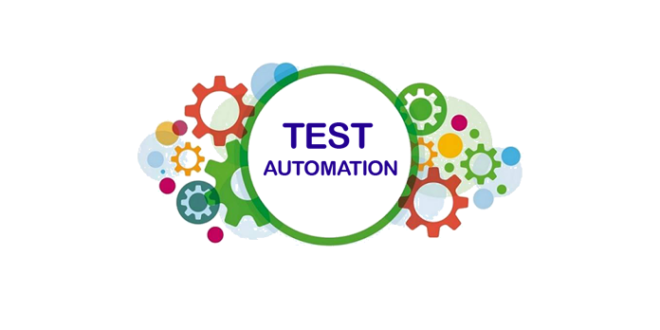Automation Testing: Secret Steps to Enhance Growth Lifecycles
Automation Testing: Secret Steps to Enhance Growth Lifecycles
Blog Article
Guaranteeing Success in Automation Checking: Key Metrics, Challenges, and Solutions Every QA Team Should Know
In the realm of software quality control, the landscape of automation screening is ever-evolving, demanding a meticulous technique to ensure seamless procedures. Trick metrics act as the compass directing QA teams with the vast surface of test automation, clarifying development and locations for enhancement. Nevertheless, obstacles impend large, commonly casting darkness on the course to success. By comprehending these obstacles and executing reliable options, QA teams can browse via intricacies with skill. The trip to grasping automation screening is led with subtleties that need an eager eye for tracking, evaluation, and continual enhancement. automation testing. As the industry pushes ahead, the quest for ideal performance in automation testing stays a constant quest, prompting QA teams to furnish themselves with the understanding and strategies crucial for victory.
Significance of Secret Metrics
Understanding the relevance of essential metrics is essential for evaluating the efficiency and efficiency of automation testing processes. Secret metrics act as measurable measures that give important insights right into various facets of the testing process, such as test insurance coverage, examination implementation time, issue density, and examination instance performance. By assessing these metrics, QA groups can identify traffic jams, inadequacies, and areas for renovation within their automation screening structure.
One crucial aspect of key metrics is their capacity to track development and check the overall health and wellness of the screening procedure (automation testing). They enable stakeholders to make educated choices based upon data-driven insights, which can bring about much more effective testing techniques and better resource allocation. In addition, crucial metrics can assist teams established reasonable goals, measure the success of automation initiatives, and demonstrate the ROI of automation testing efforts

Usual Difficulties Encountered
Obstacles generally experienced in automation testing processes can dramatically influence the general effectiveness and performance of QA groups. Automation testing may not cover all facets of screening, such as functionality and customer experience screening, which still require hands-on intervention. Conquering these difficulties calls for correct planning, strategic test situation selection, durable maintenance processes, ample sources, and a clear understanding of the constraints of automation testing.
Efficient Solutions for Difficulties
To resolve the obstacles run into in automation screening, carrying out effective services is essential for improving the performance and efficiency of QA teams. One essential remedy is to spend in robust training programs for QA teams to guarantee they have the essential abilities to properly use automation tools. Training can bridge expertise voids, enhance understanding of automation frameworks, and boost scripting capabilities, ultimately leading to much more effective test creation and execution.
Another vital option is to establish clear interaction channels within the QA group and with various other stakeholders, such as programmers and job managers. Effective communication helps in lining up assumptions, sharing progress updates, and without delay dealing with problems or barricades that may arise during the automation testing procedure.

Tracking and Evaluation Techniques
Executing effective tracking and analysis techniques is critical for guaranteeing the success and effectiveness of automation testing procedures. Furthermore, evaluating test outcomes and metrics gives valuable understandings right into the high quality of the software application being checked and the effectiveness of the screening approach.
One key technique in surveillance and evaluation is my sources making use of dashboards that consolidate relevant metrics and KPIs in a visually obtainable format. These dashboards provide an extensive summary of test implementation condition, examination protection, issue trends, and various other critical information. Regularly reviewing and examining these dashboards can aid QA groups make notified decisions, focus on jobs, and maximize testing initiatives.
Additionally, executing automated site web alerts and alerts based on predefined limits can enhance aggressive surveillance and prompt treatment. By establishing signals for performance inconsistencies or test failings, groups can attend to issues quickly and avoid them from intensifying. Overall, monitoring and evaluation methods play an essential duty in making sure the performance and success of automation screening initiatives.
Constant Renovation Approaches
Enhancing the efficacy of automation testing processes demands the constant refinement of strategies and approaches. One vital method to enhancing automation screening procedures is to conduct routine evaluations and retrospectives.

Conclusion
Finally, it is important for QA teams to recognize the crucial metrics, challenges, and services in automation screening to ensure success. By thoroughly keeping track of and assessing data, executing effective options to common obstacles, and continually boosting techniques, QA teams can maximize their testing procedures and supply high-grade software. Sticking to these methods will ultimately cause much more reliable and efficient automation screening techniques.
By examining these metrics, QA groups can recognize traffic jams, ineffectiveness, and locations for renovation within their automation screening framework.
In addition, crucial metrics can aid teams established practical objectives, measure the success of automation efforts, and demonstrate the ROI of automation screening efforts.
Difficulties typically encountered in automation testing processes can considerably influence the total effectiveness and efficiency of QA groups. Automation screening may not cover all facets of screening, such as usability and customer experience testing, which still need hand-operated intervention.In conclusion, it is crucial for QA teams to understand the crucial metrics, obstacles, and options in page automation testing to make sure success.
Report this page